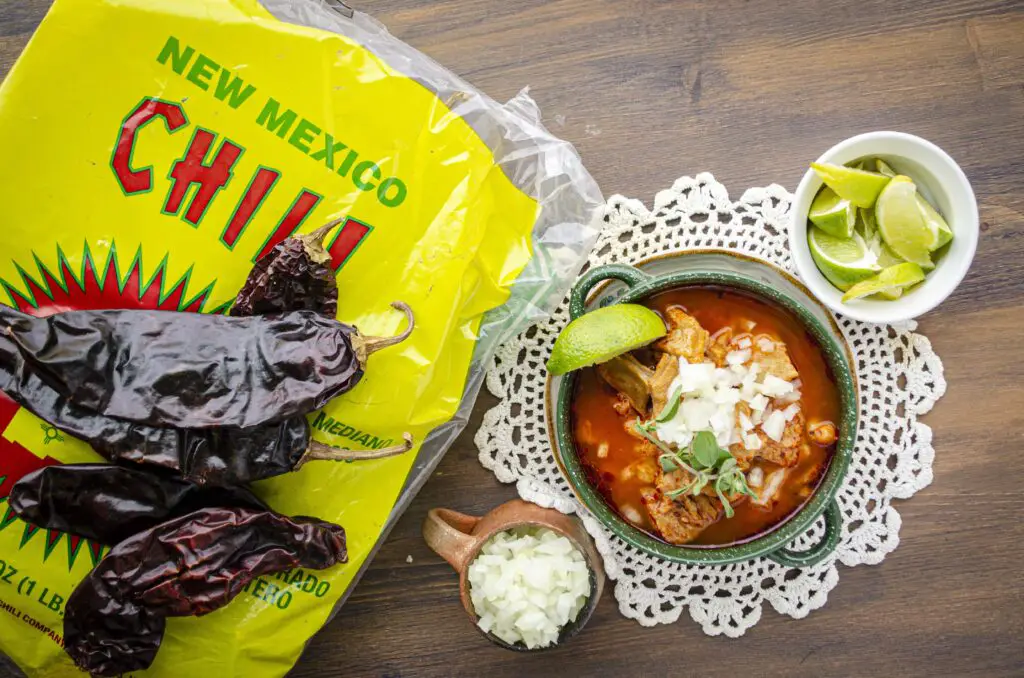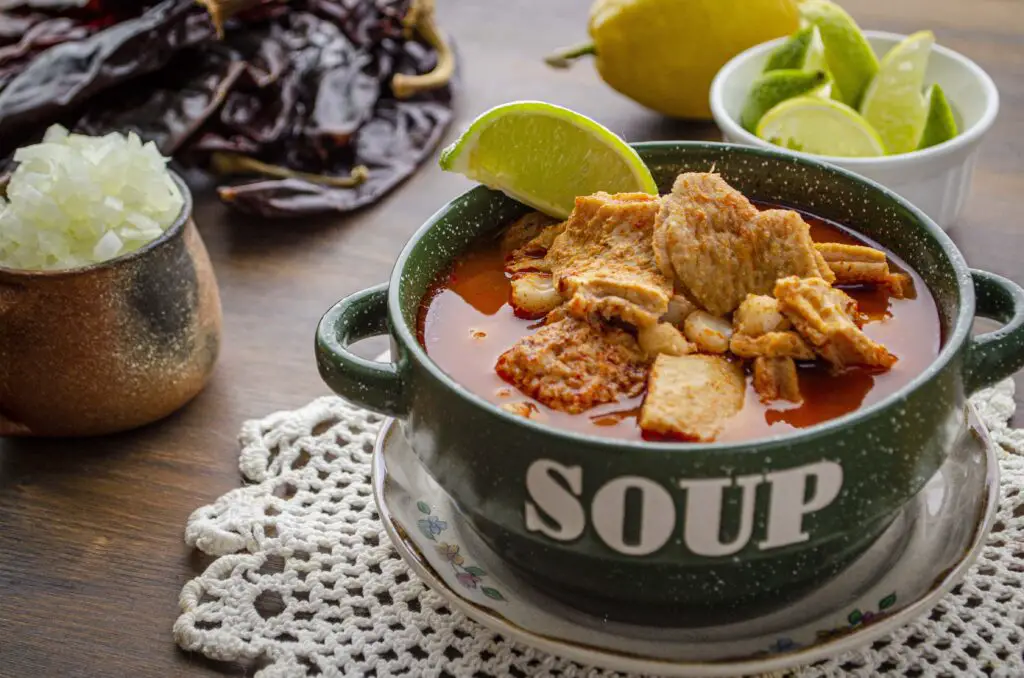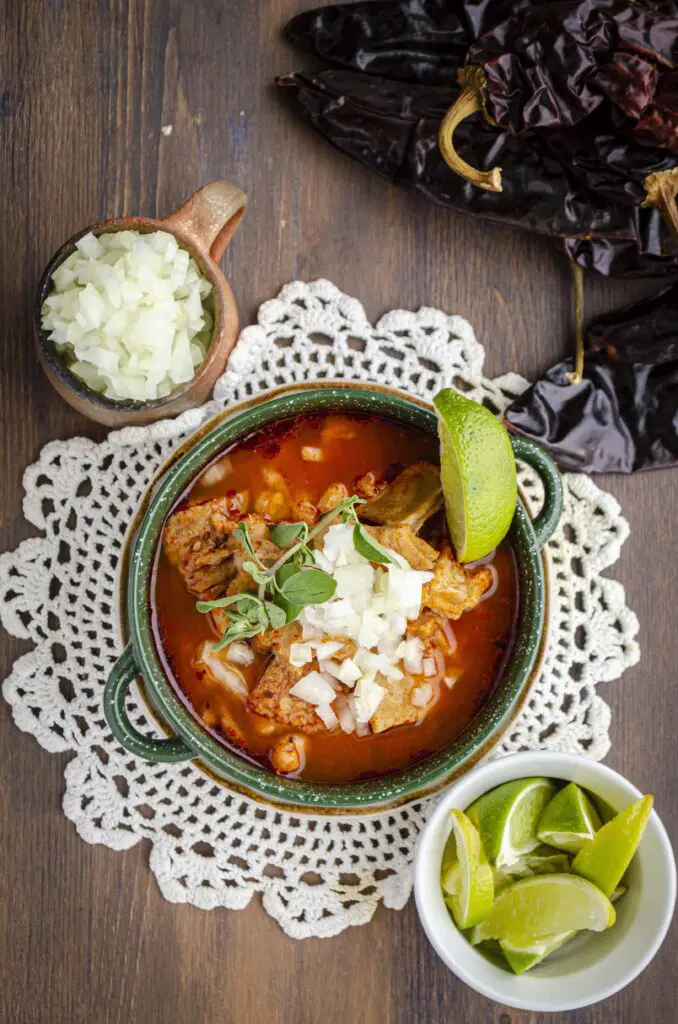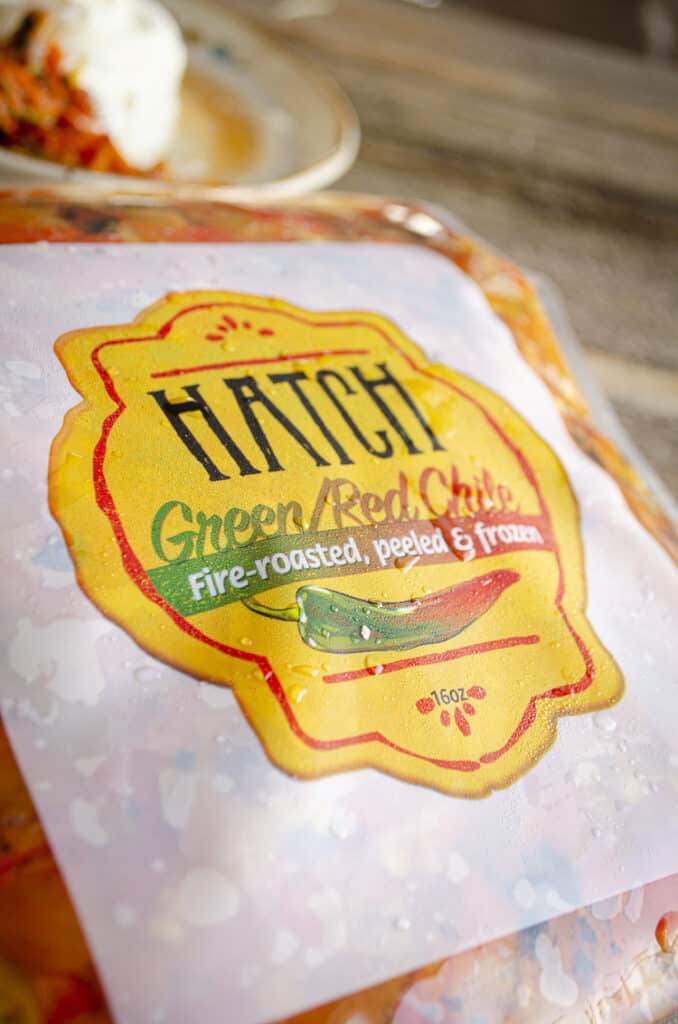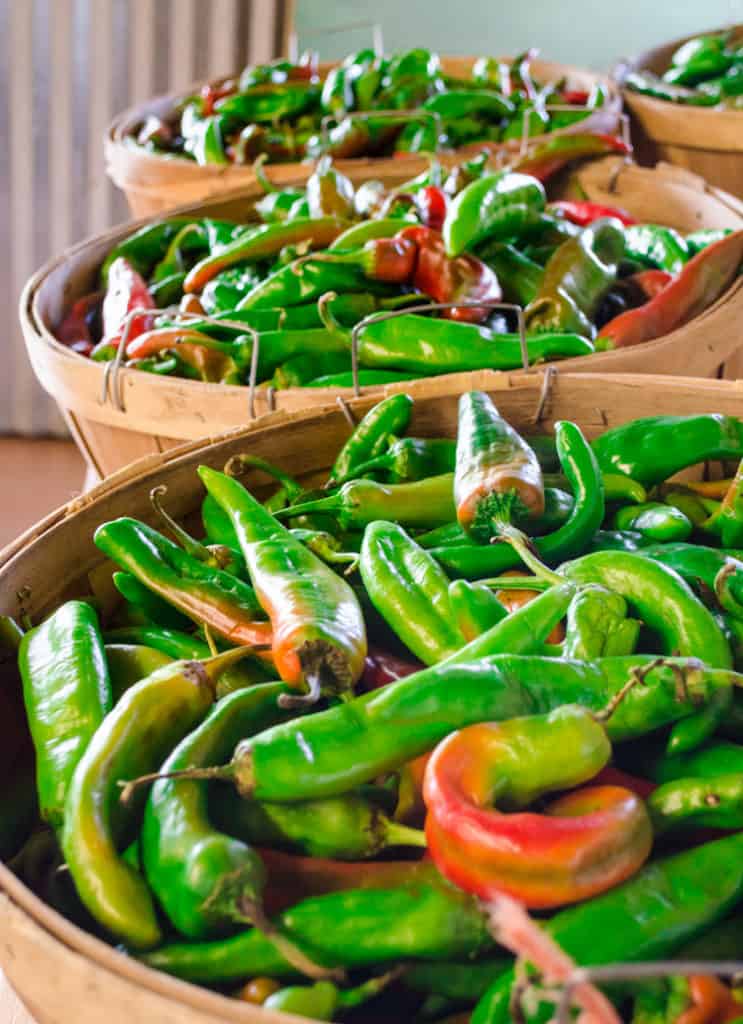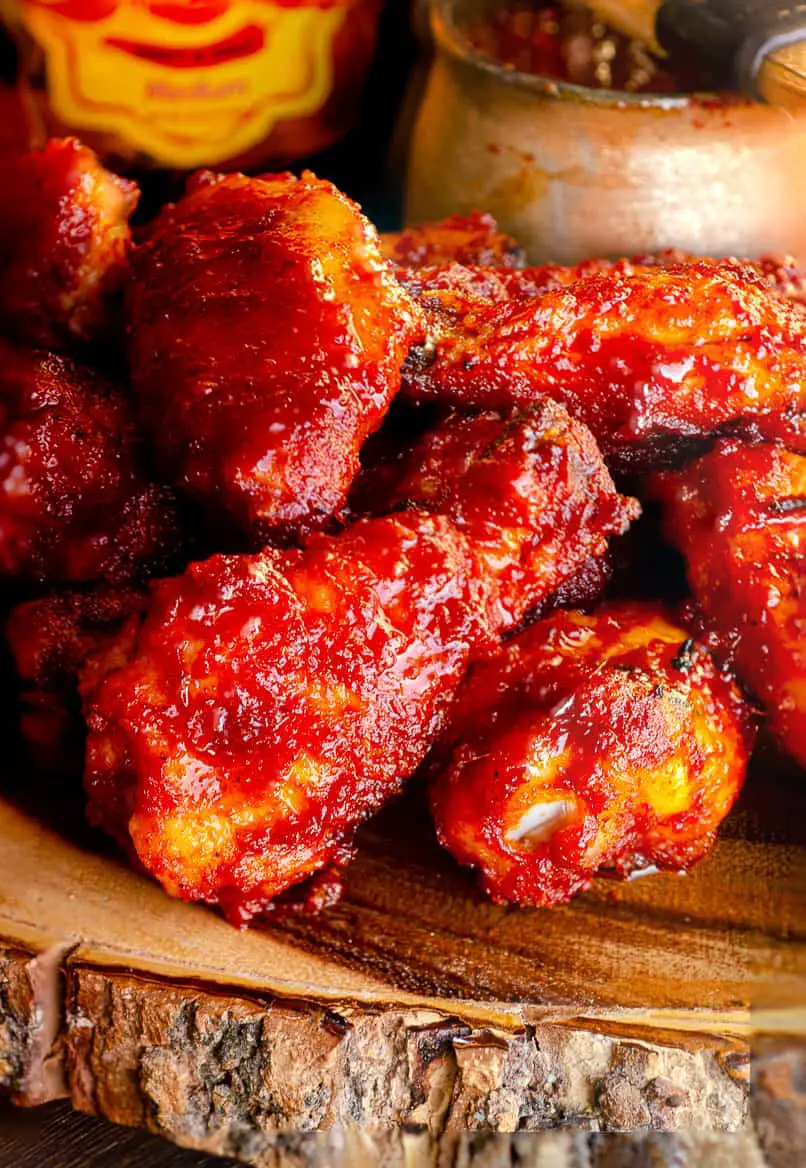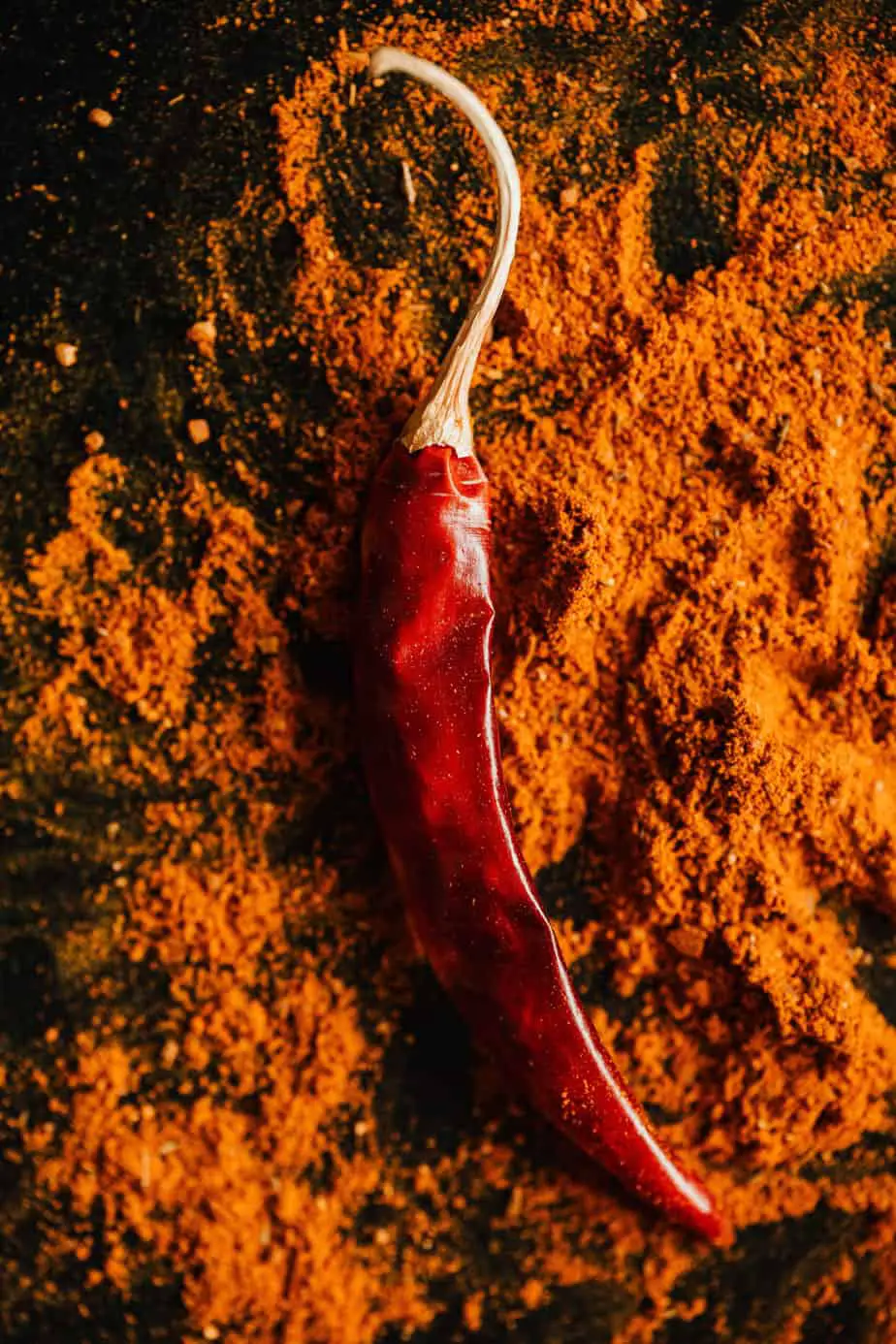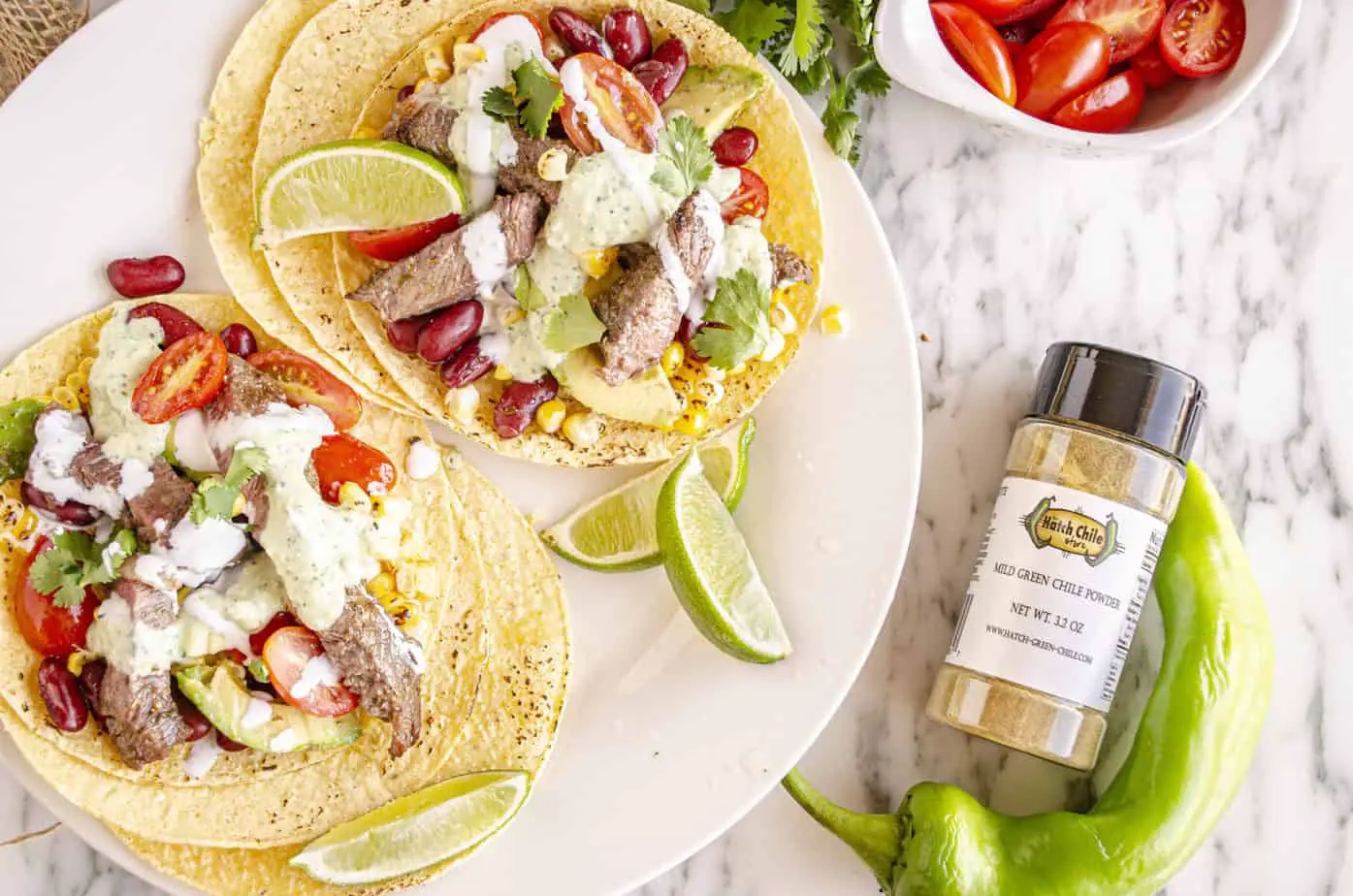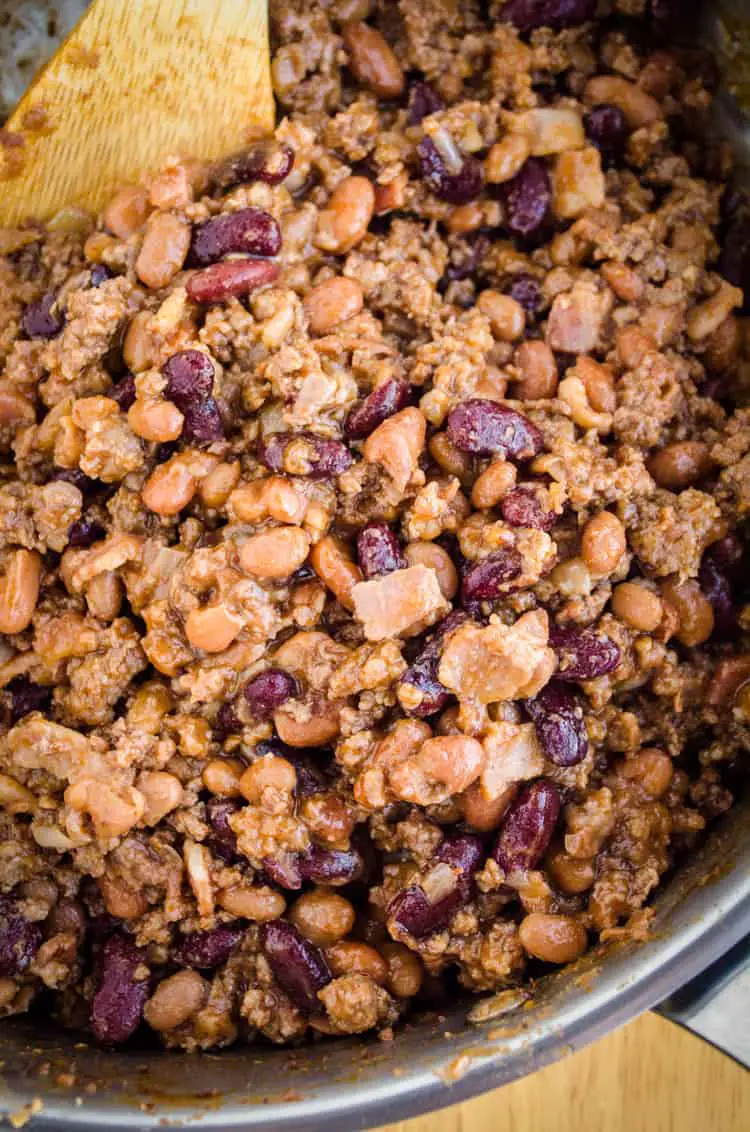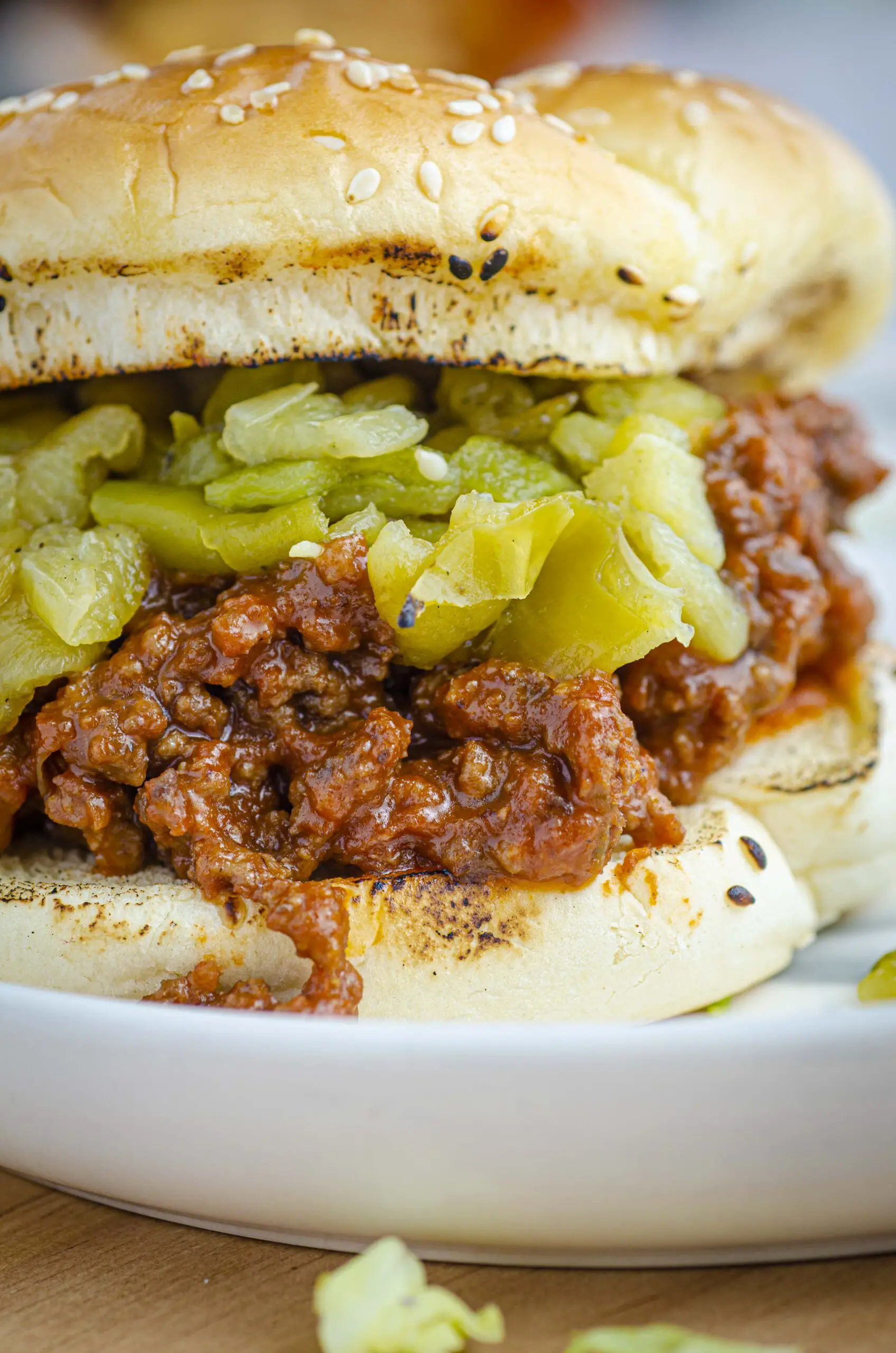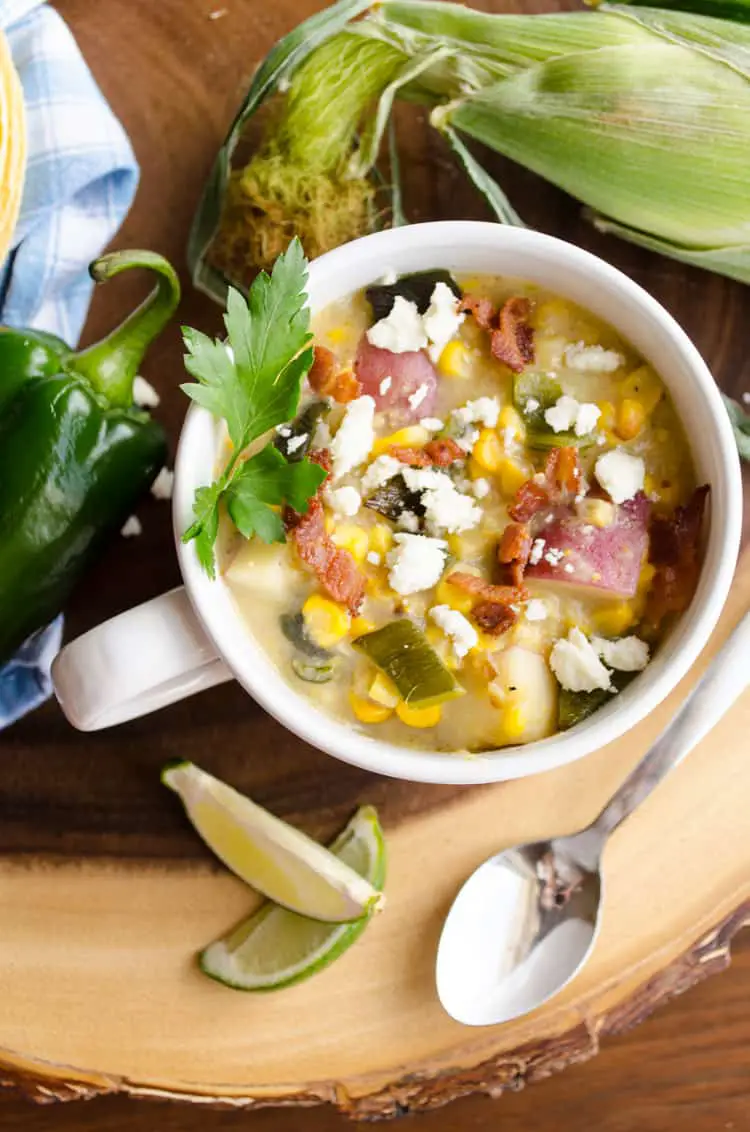Menudo with Hatch Red Chiles
This post has kindly been supported by The Hatch Chile Store. All thoughts and opinions are my own.
A lot of folks get scared-off once they learn what the main ingredient of Menudo is. But when tripe is cooked right with delicious herbs and spices, you might just give it a try.
What is Tripe?
Tripe is the stomach of a hoofed animal (most often cattle, pigs or sheep) that has been prepared for human consumption. Cow stomach is the most common tripe available; their stomachs are divided into four chambers, each with their own name and unique texture. Menudo is the common name for tripe stew (sopa) in Hispanic cultures.
It’s important when purchasing tripe to be familiar with each of the four types -Blanket, honeycomb, book, and green tripe.
Blanket, or ‘pancita’ in Spanish, is large and smooth like a blanket and is the rumen chamber.
Honeycomb, or the reticulum chamber, has many small chambers in a honeycomb shape that line the inside of the stomach. Honeycomb is the most expensive type of tripe to purchase because it is the most difficult to clean.
The book type, or omasum, is structured into thick page-like folds.
Green tripe is the Abomasum- last chamber before the intestines. This type of tripe is usually not eaten by humans but is very nutritious for dogs.
How to clean tripe
It’s very important that you clean or wash your tripe meat and remove any little fatty bits off of it before you cook it. Whether you purchased it at a Kroger or a Carniceria, it should be washed thoroughly at home, by you, in a bowl of clean water several times, until the water rinsing off is clear.
Some tripe is sold as is (just been cut out of the cow), or has only been given a quick rinse before being packaged and presented to you. Often you’ll find tripe in grocery stores in the US has been washed AND soaked in a bleach solution to kill any bacteria that may have been missed from cleaning.
Tripe has a reputation for often having an unappealing odor. Washing it helps, but a soak in a mixture of water and white vinegar after washing is customary to get rid of the smell and further kill off any bacteria that may be hiding in the nooks and crannies.
Tripe nutrition
According to “Eat This Not That”, tripe is very nutritious and is rising in popularity as a ‘superfood’. It is high in Iron, calcium, protein, vitamin B12, selenium and zinc. and one 5 oz. serving will give you 17 grams of protein, and 5 grams of fat. One drawback (nutritionally) is that it’s high in cholesterol.
Menudo for a Hangover?
Many people swear that waking up to a bowl of Menudo will get you past a hangover fast. It is commonly eaten the morning after a night on the town in Latin parts of the world. And perhaps all those vitamins and nutritional benefits tripe provides are put to good use this way.
Is menudo good?
Slow cooked to tender in a rich broth seasoned with spices, onion, garlic, pureed chile sauce and hominy kernels, Menudo can be delicious if you get past the mental factor of what you are eating.
In the US, we have grown accustomed to our choice cuts of meat. Menudo is a love it or hate it type of stew, where those who are raised eating have no problem with it, but many adults brave enough to try it for the first time will say ‘no thank you’ (or other choice words).
There are the brave few who can get past the mental block and chewy texture to join the Menudo club and enjoy a nice hot bowl with freshly diced onion and cilantro on top, just like any other bowl of stew.
Offal, or ‘other’ animal products like organs, are not nearly as popular here as they are in other parts of the world. And good for them for not wasting the animal. The US meat industry doesn’t waste it either- it just gets put into hot dogs. Yay.
Making delicious Menudo
Prep the menudo by cutting it into squares, removing any fat, and rinsing/washing it several times in a large bowl until the water runs clear. Soak it in water and white vinegar for about 30 minutes. Drain a final time and add to a large pot. Add in large chunks of onion, a bay leaf, a cow’s foot (ankle bones) and lots of minced garlic. Cover with water and bring to a boil. Skim any foam/fat off the top, then cover and turn the heat down just to a simmer and let it cook for 3 hours.
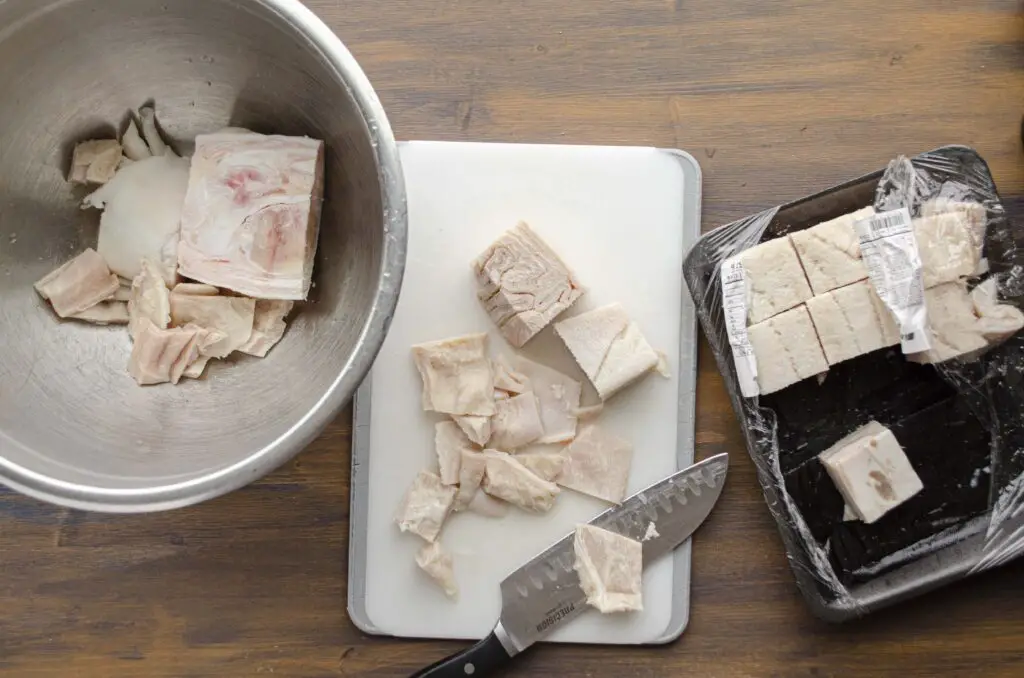
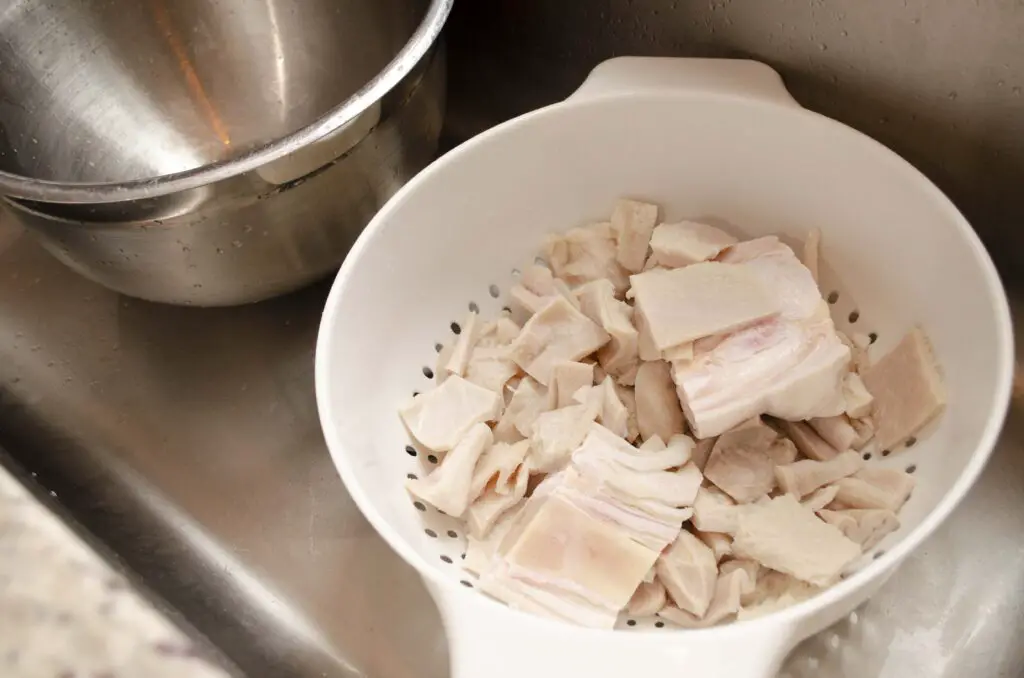
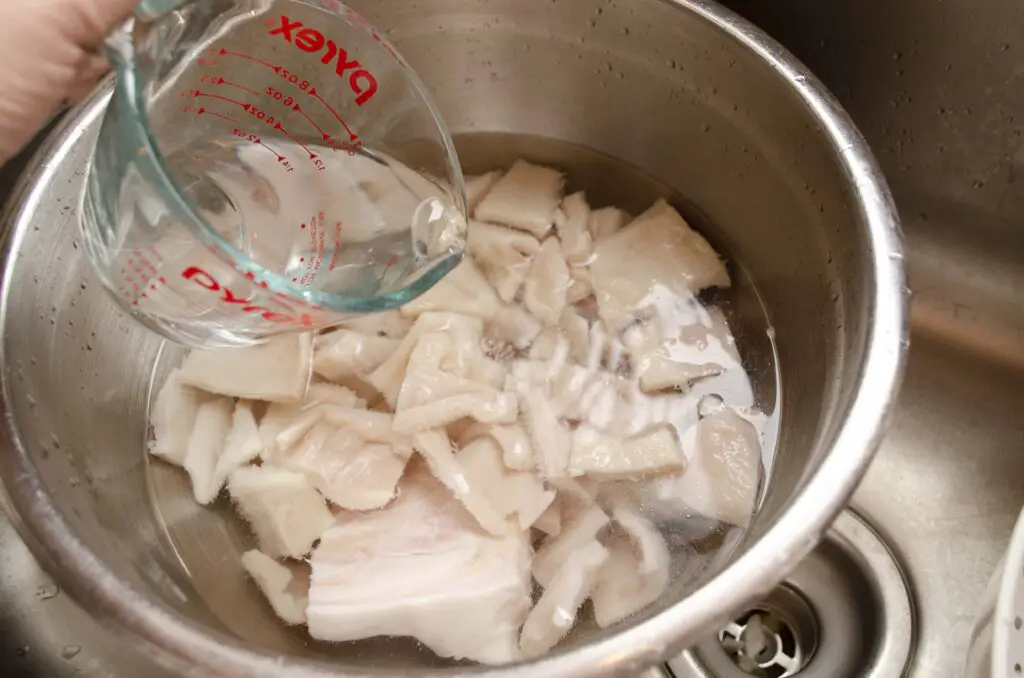

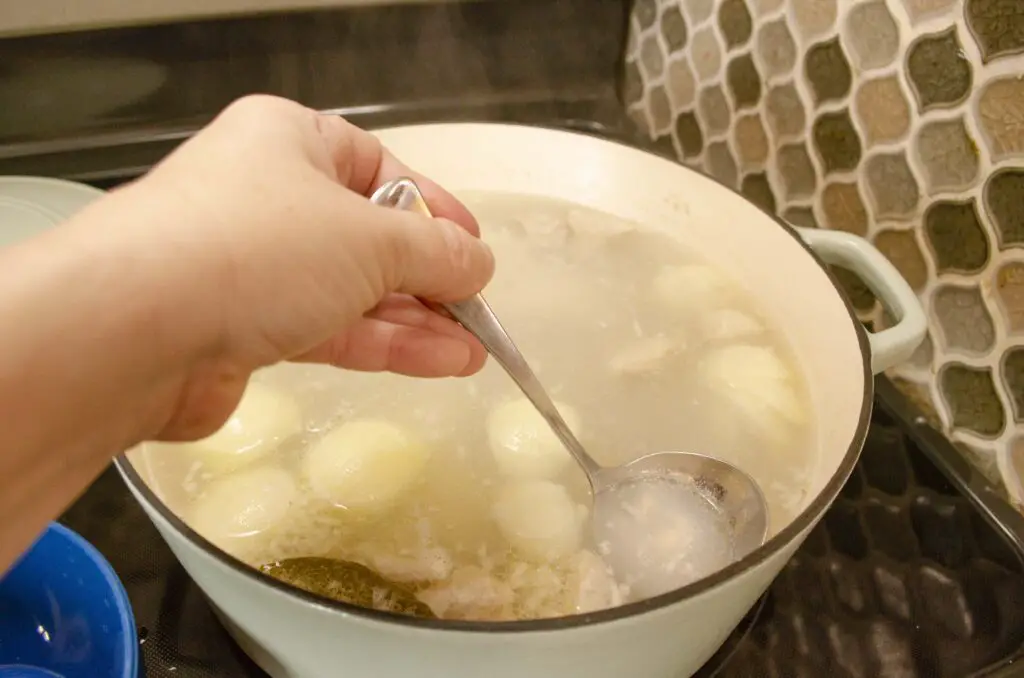
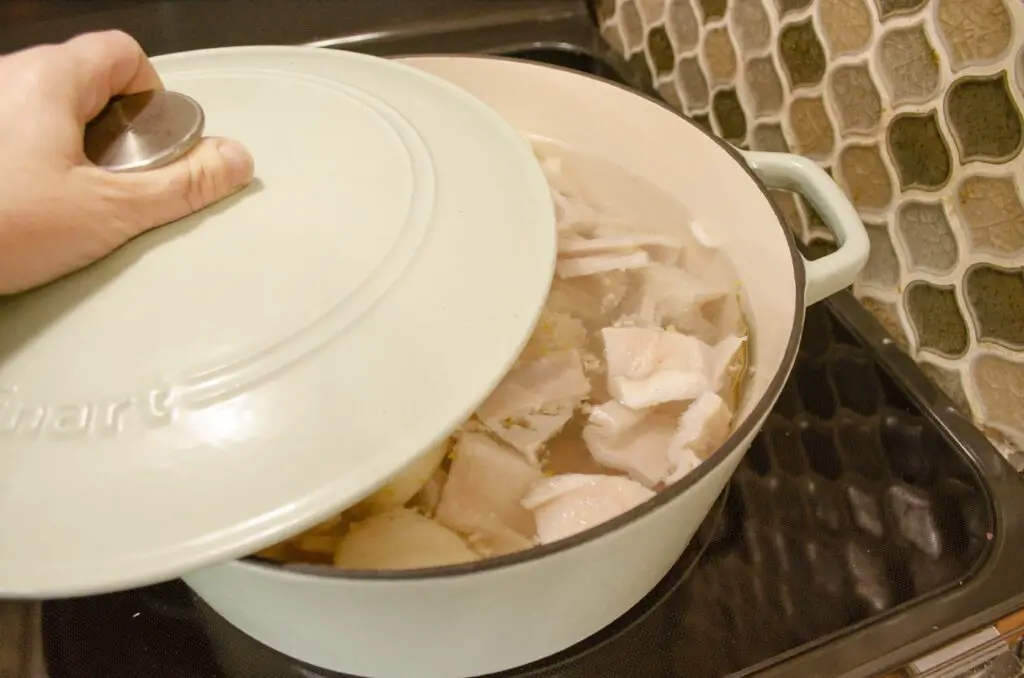
Making the red chile sauce
Traditionally, the red chile sauce for menudo is made from dried red chile pods. Even though I have lots of chile pods, I chose to save myself the time it would take to rehydrate and puree them and instead I used a handy jar of pureed Hatch Red Chile Sauce I had on hand; simply adding in toasted herbs and spices to properly season it for the menudo stew.
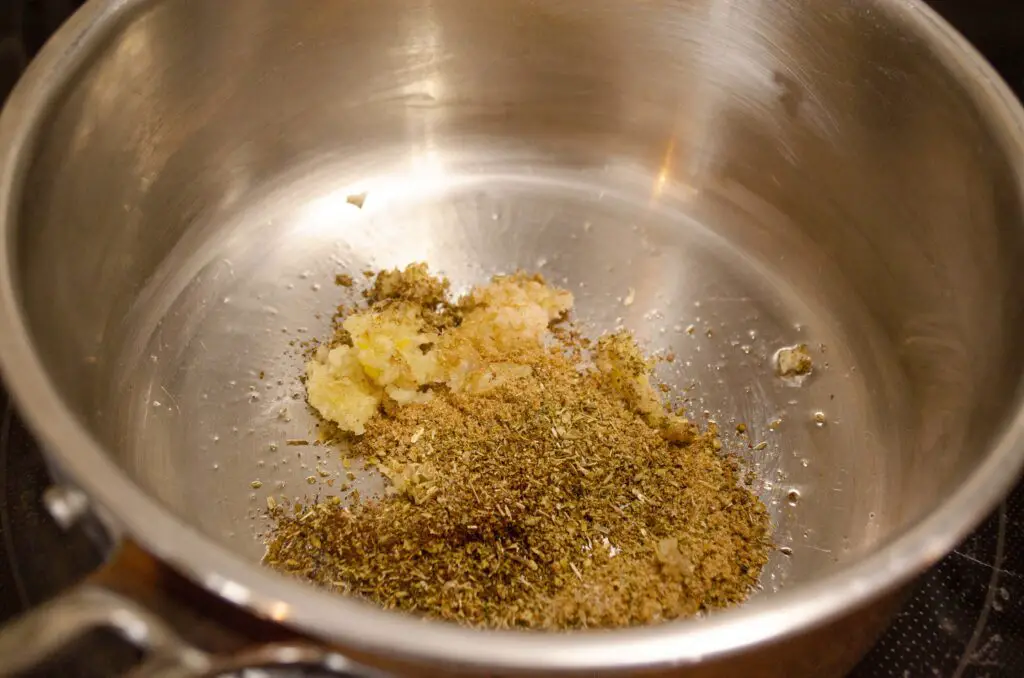
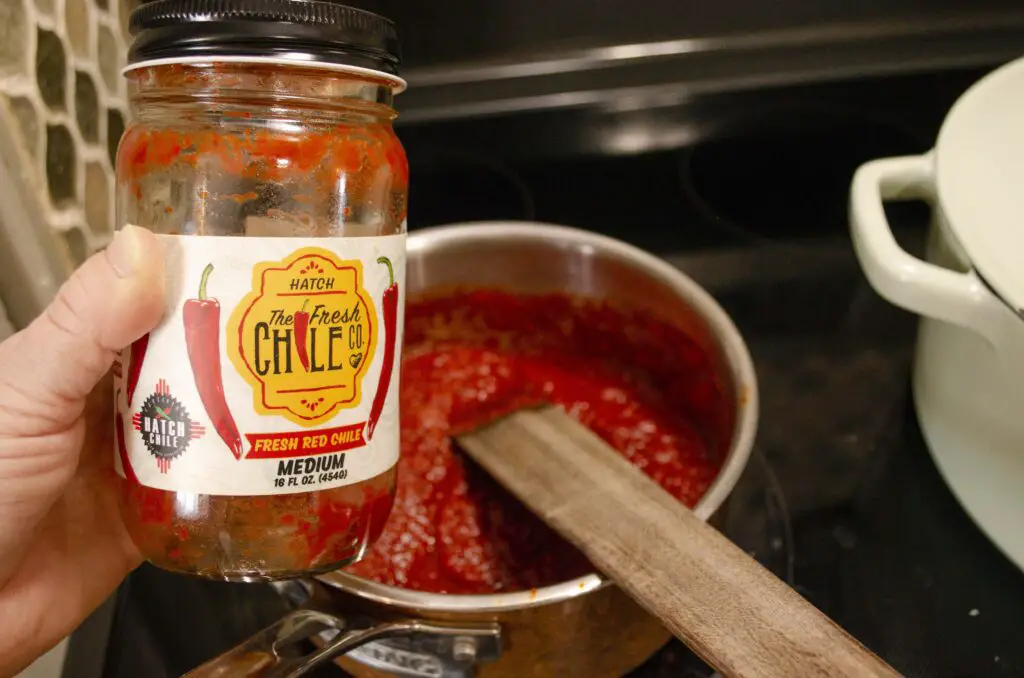
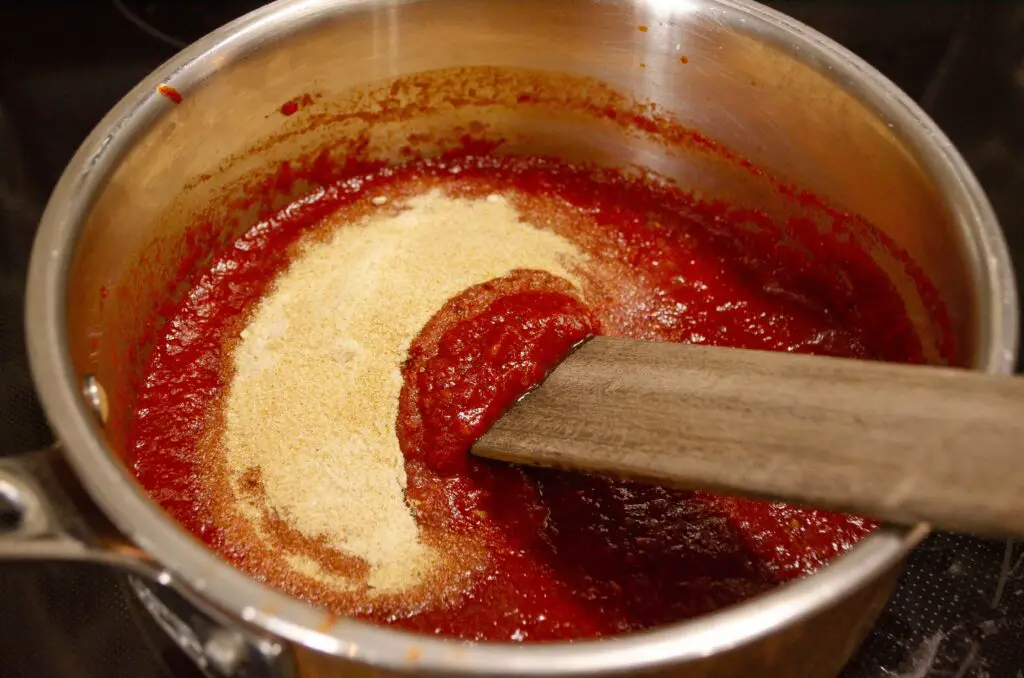
Once the menudo is cooked very tender, stir in the seasoned red chile sauce and remove the onion, bay leaf, and stock bones. Simmer for an additional 45 minutes to meld all the flavors together. Serve, garnished with chopped raw onion.
What are Hatch Chile Peppers?
Hatch Chile peppers are world famous for their delicious flavors, produced by the unique climate and soil composition that exists only in the Hatch Valley of Southern New Mexico. These factors combine to grow exceptional-tasting chile peppers with smoky, sweet, and hot flavor notes. More people discover Hatch Chiles each year, and their popularity continues to grow.
Growing up in New Mexico where chile peppers are an integral part of the culture, I know that Hatch chiles have earned a reputation for being the best of the best. I personally only use authentic Hatch in all my cooking because it simply tastes amazing. You should be able to find canned Hatch chile in any supermarket these days, or you can order it directly like I do. Frozen chile is much, much better tasting than canned!
The Hatch Chile Store is the premiere website for ordering your Hatch chile– they are incredibly good at shipping fresh authentic chile right to your door, whatever variety and hotness lever you prefer. It’s where I get all my Hatch Chile, and I must say the flavor really does stand out above any other chile pepper variety.
Head on over now to The Hatch Chile Store to stock up on the most delicious Hatch chile you can buy anywhere- they’ve always got great deals on your favorite products!
Did you know I have a full-color cookbook with lots more easy and delicious New Mexican recipes? You can learn more about it here!
Print
Menudo featuring Hatch Red Chiles
Description
Menudo slow cooked to tender in a rich broth seasoned with spices, onion, garlic, pureed New Mexico Hatch red chile sauce and hominy kernels.
Ingredients
- 2 pounds of clean tipe cut into 2-inch sized pieces
- 1 cow’s foot (ankle bone is fine, doesn’t have to include hoof)
- 6 large garlic cloves, minced or pressed, divided
- 1 small onion, cut into 4 chunks
- salt
- 1 bay leaf
- 1 tablespoon vegetable oil
- 1 teaspoon ground coriander
- 1 tablespoon dried Mexican oregano
- 1/8 teaspoon ground cloves
- 1/8 teaspoon ground allspice
- 1/2 teaspoon freshly ground pepper
- 1 (15 oz.) jar roasted New Mexico Hatch red chile sauce
- 2 teaspoons onion powder
- 2 tablespoons garlic powder
- 2 cans (29 oz.) white or Mexican style hominy, drained
Garnishes
- minced white onion
- sliced fresh limes
- chopped fresh cilantro leaves
Instructions
- Clean any bits of fat still clining onto the outer lining and in folds (if present) of the tripe. Cut into chunks approximately 2 inches by 2 inches. Place in a large bowl with the cow’s foot and cover all meat with water. Using your hands, stir the contents and rub them to remove any dirt or particles. Empty the entire contents out into a large strainer or sieve. Repeat until the water runs clear.
- Place the tripe and cow’s foot into a large stock pot or Dutch oven. Cover with water, the top of the water being at least 1 inch above the contents. Stir in 2/3 of the minced garlic, the onion pieces and the bay leaf. Bring to a boil over high heat and use a large spoon to skim any foam or fat from the surface. Cover and turn the heat down as needed to simmer for about 3 hours. Give it a stir once or twice to ensure nothing is sticking to the bottom.
- While the tripe simmers, place a saute pan or medium size pot over medium heat. Add the vegetable oil. When heated, add the remaining minced garlic and stir for about 30 seconds, or until fragrant. Combine the coriander, oregano, cloves, allspice, and pepper into a small bowl. Add to the garlic and cook for just 15 to 20 seconds, then pour in the entire jar of Hatch red chile sauce and stir to combine. Stir in the onion and garlic powder and bring the sauce just to a low boil, then remove from heat and set aside until the tripe is done.
- When the tripe has simmered on low for 3 hours, spoon out the bay leaf, cow foot, and onion pieces. Remove any meat from the cow hoof and add it back to the pot, discarding the bones. Stir in the prepared red chile sauce and hominy. Continue to simmer for another 45 minutes. Remove from heat, dish into bows, and top with garnishes to serve.

